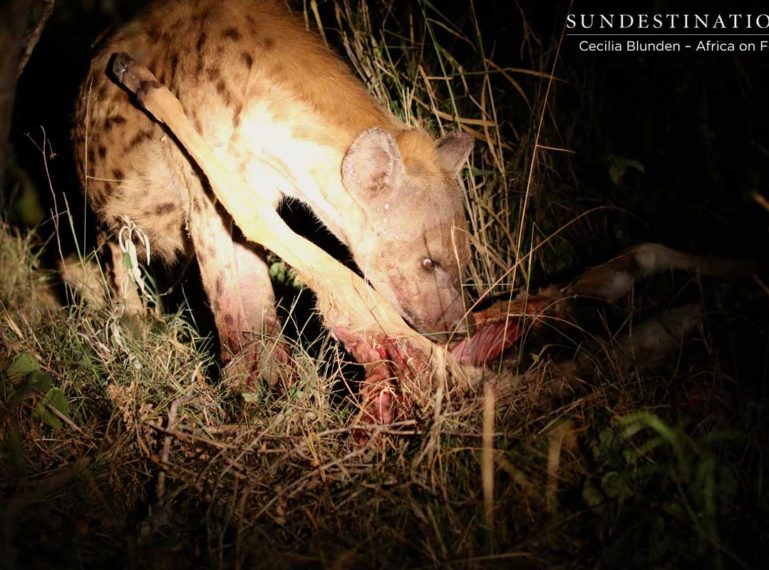
Naturally, one would lead towards ‘scavenger’ as a title for the spotted hyena, given their presence at almost every rotting kill site, and their ability to finish off the toughest skin and bone of a carcass. However, these notorious meat-eaters are in fact the most successful large carnivores in Africa, and can most certainly be classified as ‘super predators’ of the African wild. With unbelievable endurance, extremely strong neck and jaws, specially designed teeth, and social structures that are brutal right from birth; it is no wonder that these misunderstood creatures take on lions, and win.
Take a look at this fantastic sighting of a clan of spotted hyenas at Africa on Foot and nThambo Tree Camp recently.
Leopards fussily pluck out fur and feathers before eating their freshly killed food, lions have the reputation of the ‘hunting elite’ (although, do not be fooled, lions do scavenge and eat their fair share of maggot-infested meat); yet hyenas are the ones walking away with the bad rep! In actual fact, 95% of meals hyenas eat are the result of a successful hunt. Particularly in areas where there are not many lions, hyenas reign supreme, hunting and killing most of what they eat, and scavenging only a small percentage of their meals. What this says about hyenas is that they are survivors, taking whatever is available, and not limiting themselves.
Here we captured a moment between a leopard and a hyena at night in the Klaserie: The male leopard was intimidated by the hyena and far-too-willingly let his kill go when the hyena approached. Hyenas are not to be messed with – and this one was injured!
Hyenas exist in clans, which are family groups run by larger, aggressive females. All males in the clan will rank lower than every female, including female cubs. Males are also smaller in size than females, and females possess more testosterone than any other female mammal. Just when you thought these were the most masculine ladies around, let it be known that female hyenas actually possess genitalia similar to that of the males. Pseudo-penises in females are visible and look just like the males’ penises, however, they do not perform the same function and do not make the female hyena a hermaphrodite.
The pseudo-penis is actually part of the birth canal, and due to its narrow size in comparison to the size of a hyena cub at full term, many cubs born to first-time mothers are deprived of oxygen at birth and do not survive. A second pregnancy will most likely result in a successful birth because the birth canal will have torn and allowed for more space for the cub to be born. Female dominance is exerted right from birth. Two female cubs will fight for dominance, often resulting in the death of the weaker one, while a male and female cub won’t bother to fight because males are automatically lower ranking than females.
The renowned calls of the hyena echo through the bushveld, particularly at night. The most common call is the resounding ‘whoop’, which is exhibited when a clan comes together to hunt, but in fact, hyenas communicate using a total of 14 different calls. At a carcass, a feeding frenzy takes place and a combination of ‘giggling’ and snarling can be heard. Hyenas will frequently challenge lions, and attempt to chase a lioness or 2 off a kill. It is said that once a lioness is outweighed 4 hyenas to 1, she will take off and let hyenas take over.
Fun Facts about the Super Predator:
– Tortoises eat dried hyena faeces to strengthen their shells because of the high calcium content in the faeces.
– Hyenas regurgitate undigestible hooves and hair in the form of pellets.
– Hyenas are more closely related to cats than dogs, but they fall under their own family name, Hyaenidae.
– Hyena cubs are born with their eyes open and canines erupted, and they survive on mother’s milk for 12-14 months.
– Female hyenas create a genetic line of successors, passing on hierarchy from mother to daughter.
– Hyenas are thought to aid natural disease control because of their readiness to scavenge and clean carcasses.
– The lifespan of a hyena is typically 20 years.
– Other members of the Hyaenidae family are the brown hyena, aardwolf, and striped hyena.
Here is a short clip of this particular sighting of 4 hyenas seen on game drive at Africa on Foot lately:
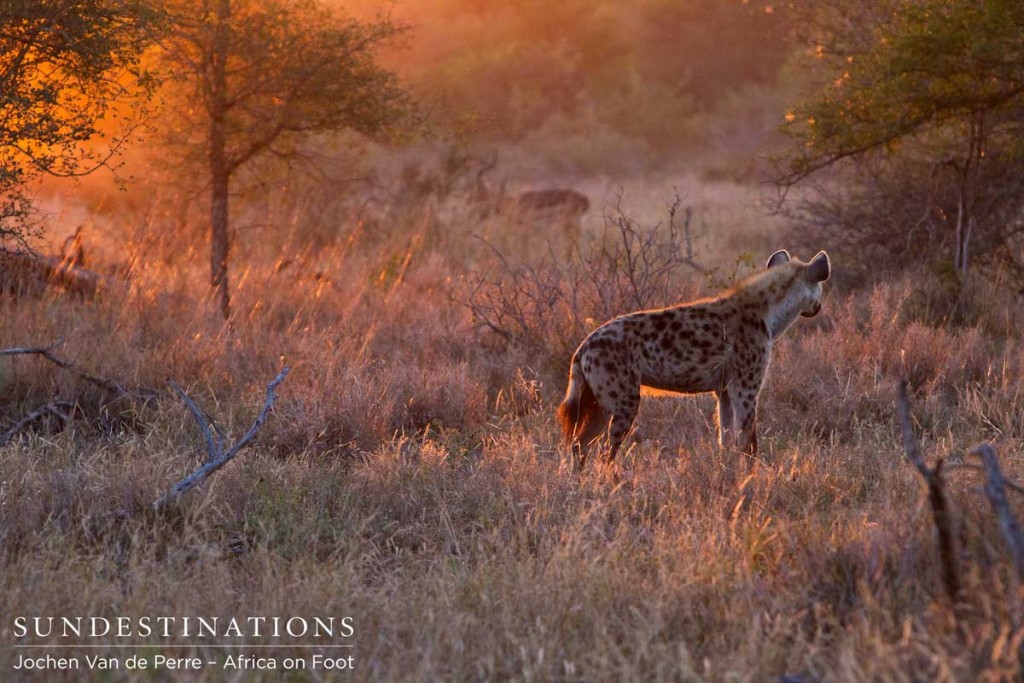
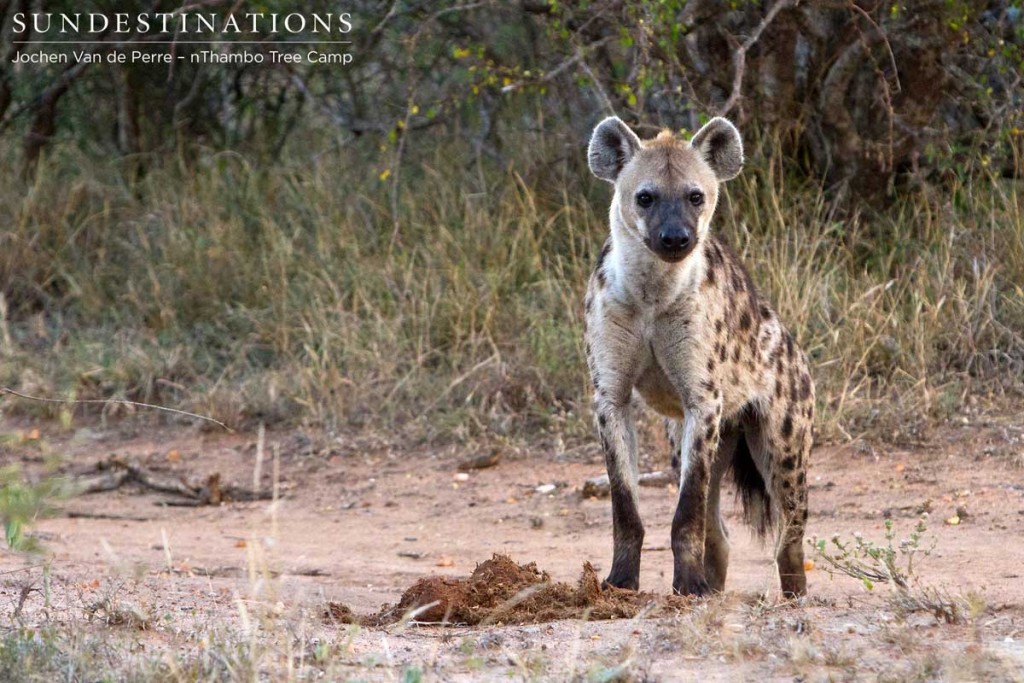
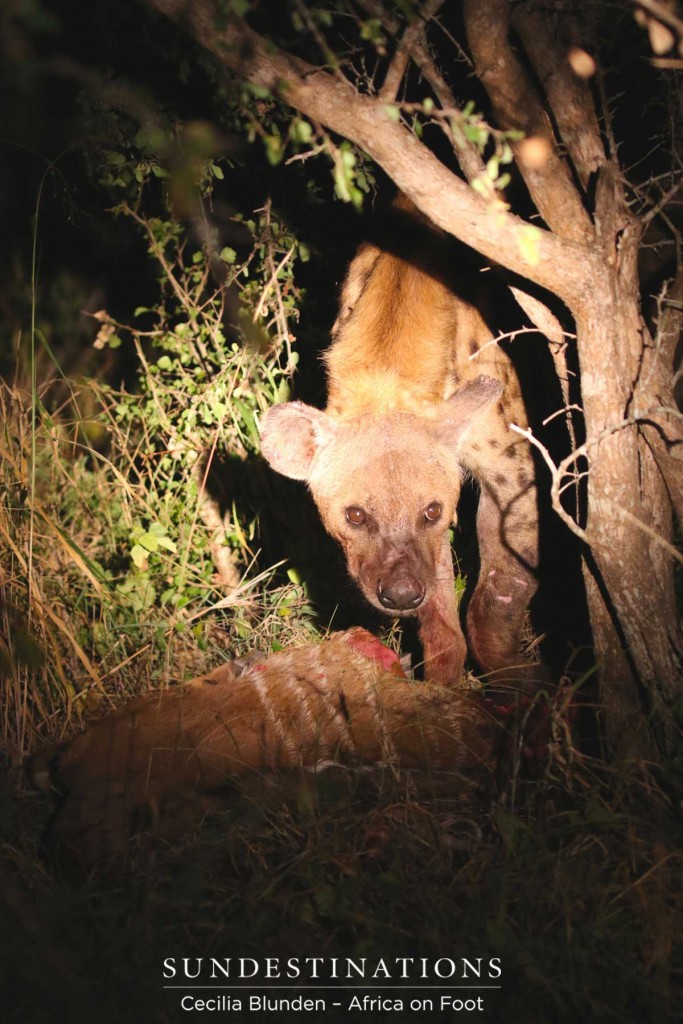
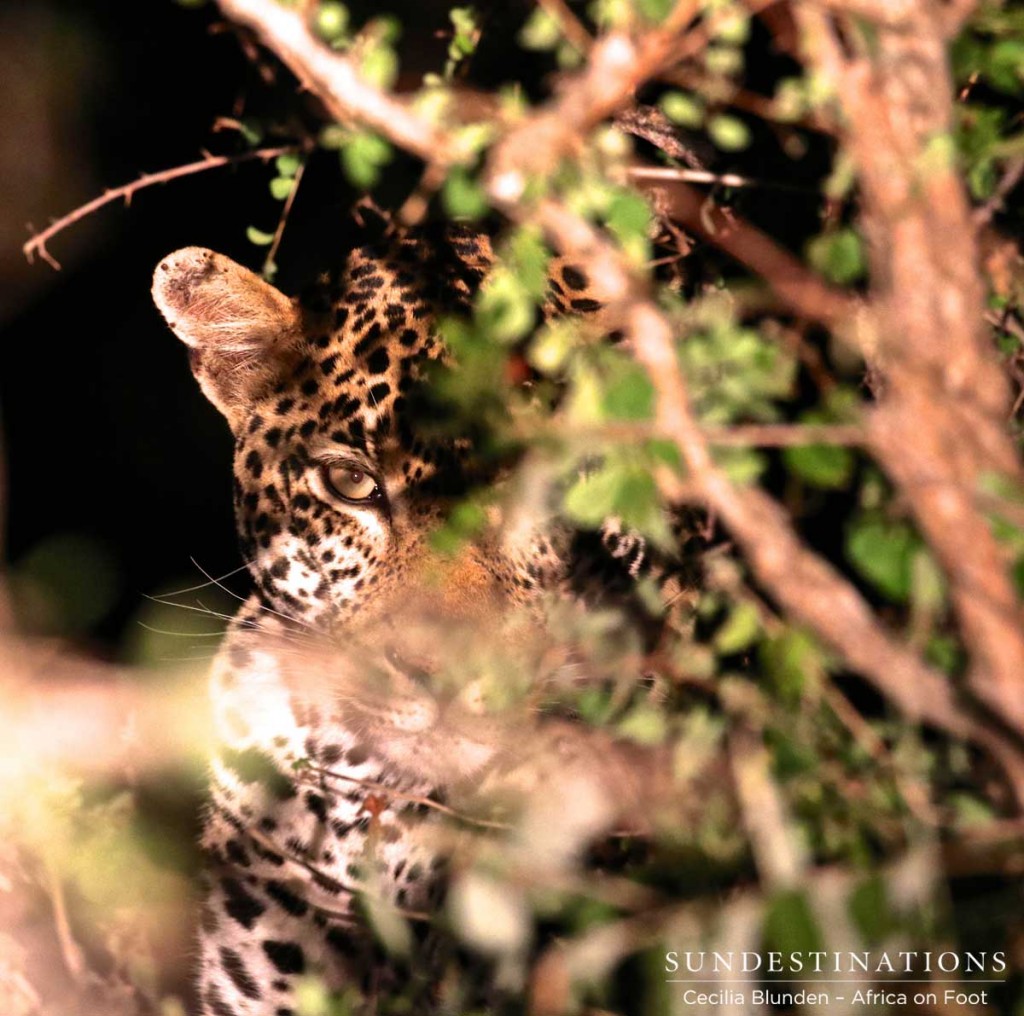
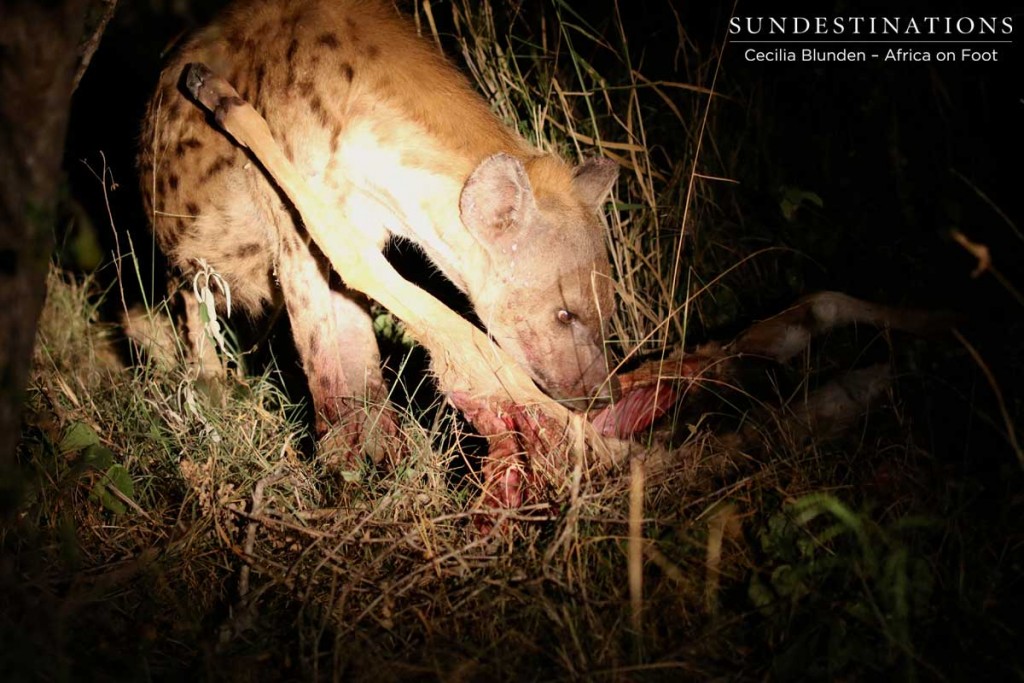
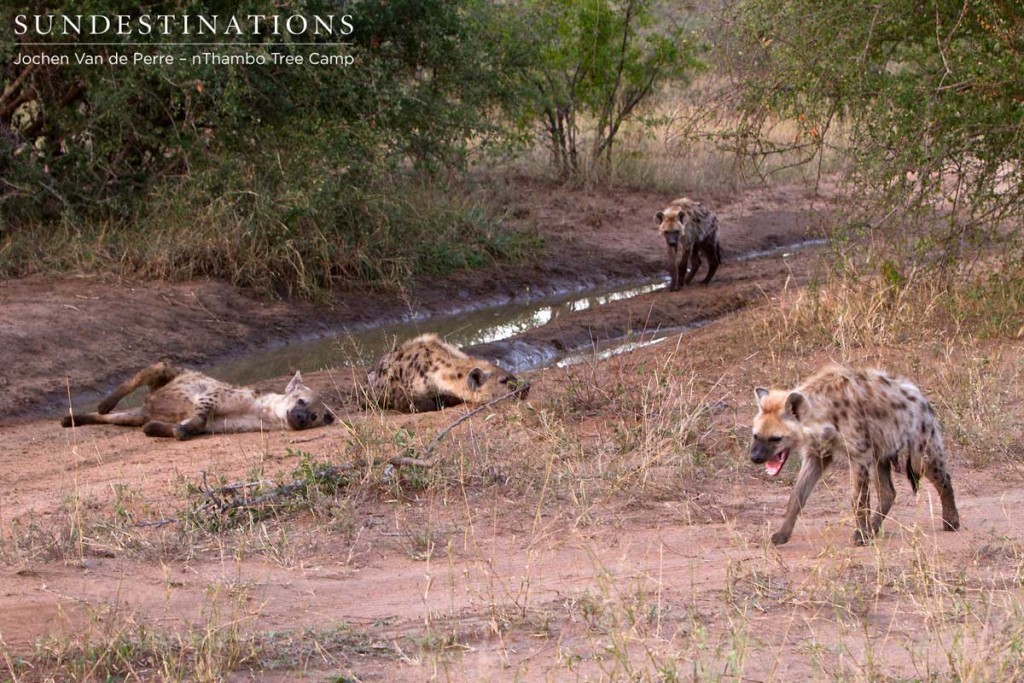
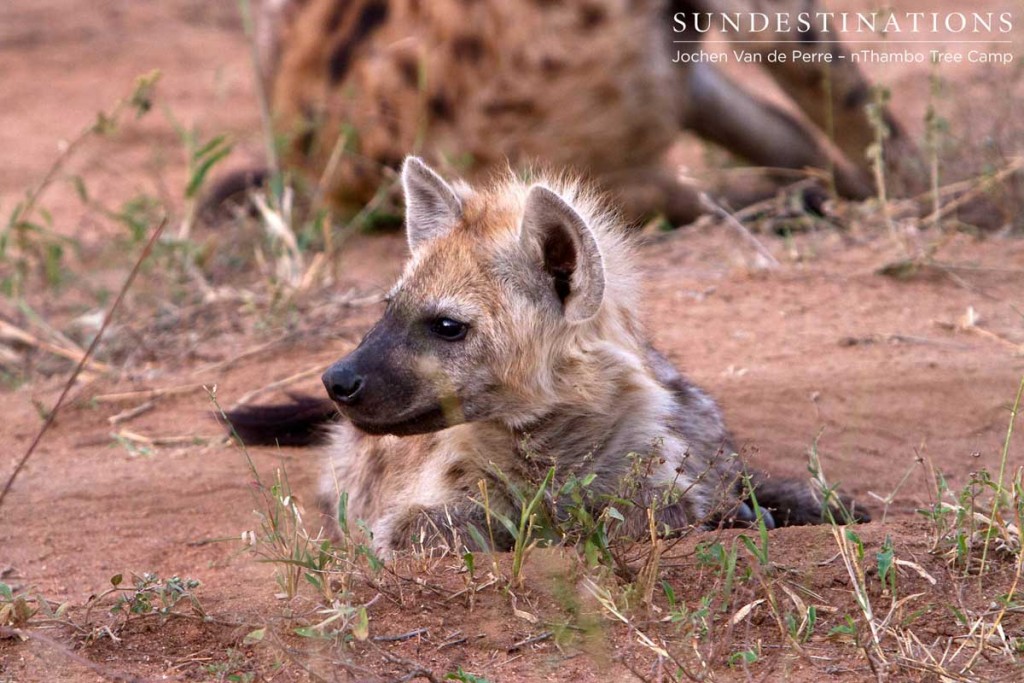
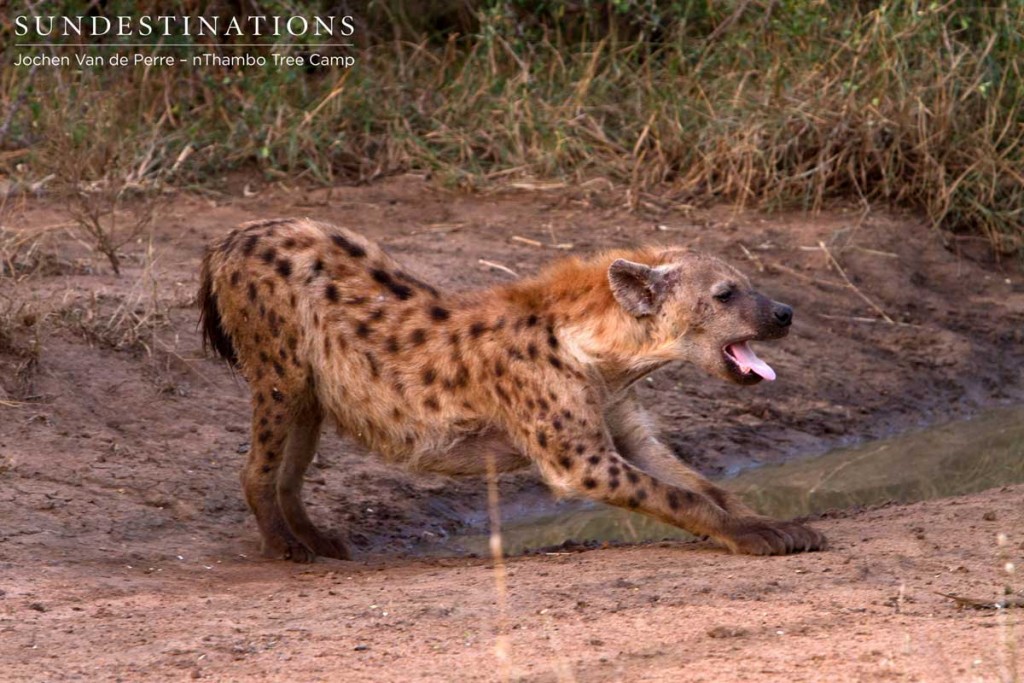
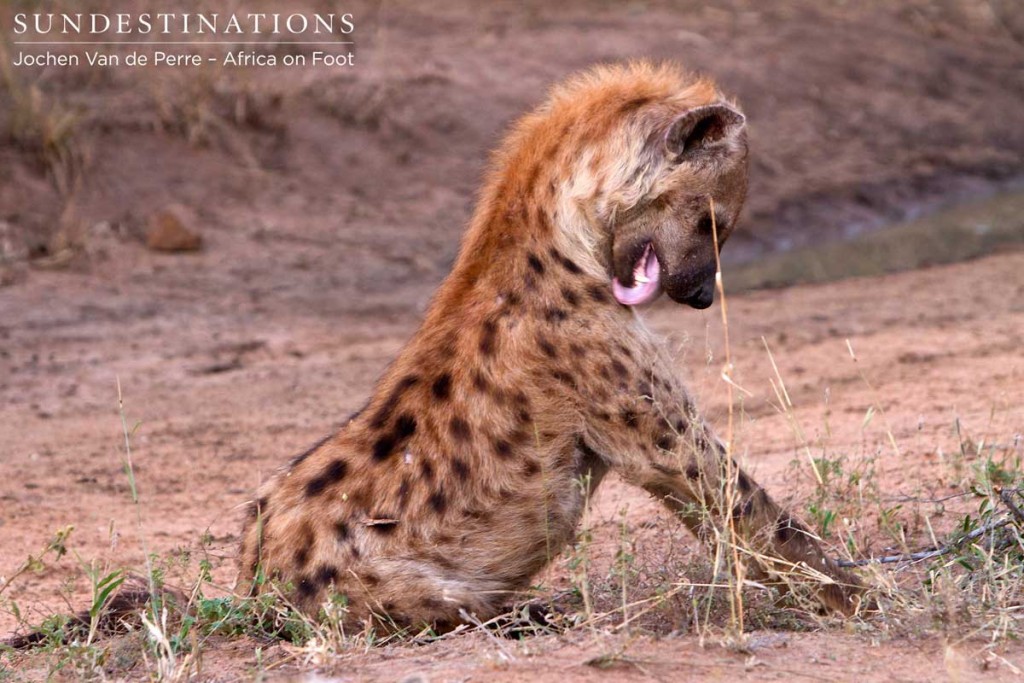
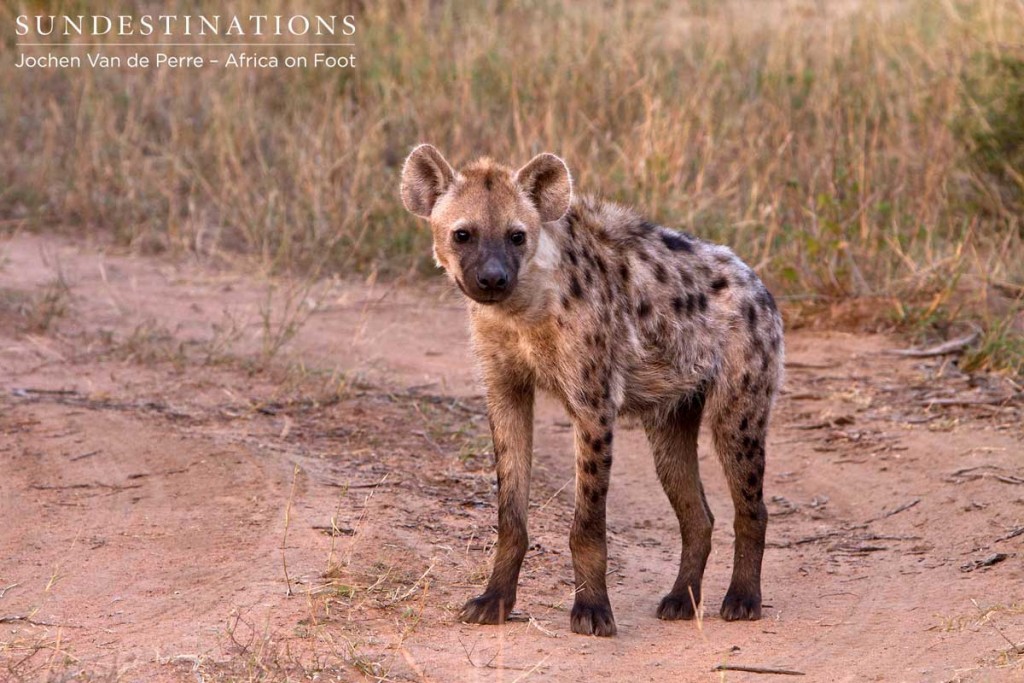
Leave a Comment